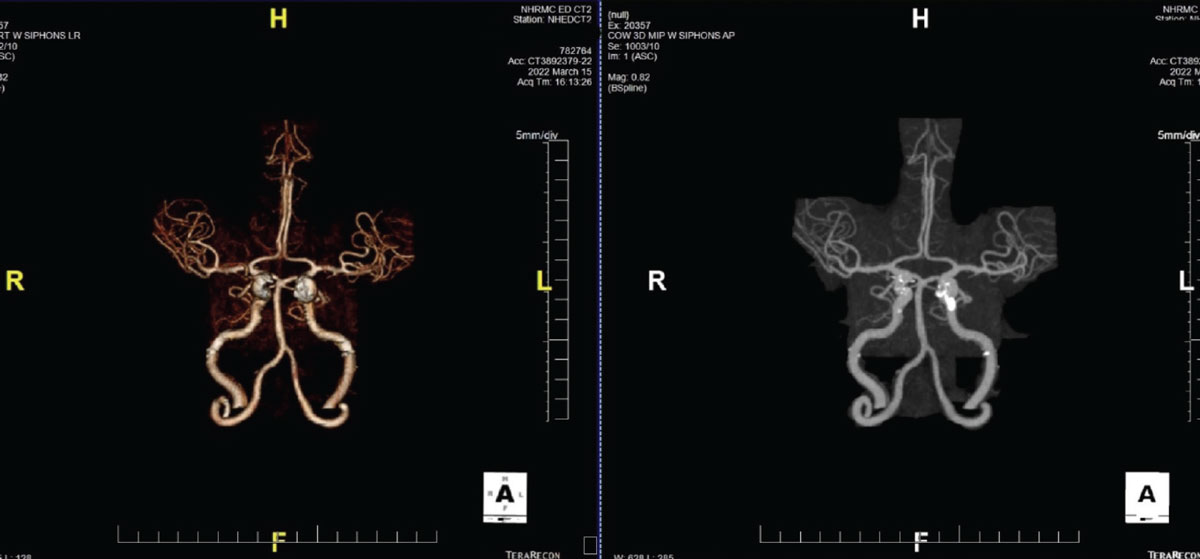 |
| CT angiography is one neuroimaging study that may be advisable in patients experiencing TMVL. Photo: James Fanelli, OD. Click image to enlarge. |
A recent study, which examined the value of thorough systemic evaluation in young patients with transient monocular vision loss (TMVL), showed that 15% of this population had abnormal findings. This suggests that neuroimaging and cardiac workup is warranted to prevent future complications in these patients, according to the study authors.
This prospective, cohort study included patients (ages 18 to 45) with TMVL, all of whom were referred for neuroimaging (CT or MR angiography of entire carotid tree and MRI of the brain) and cardiac investigations (transesophageal echocardiogram and two weeks Holter monitoring).
The mean age of the 20 participants was 33.1 ± 8.2 years, and 16 out of 20 patients were female (80%). Study authors reported migraine in five patients (25%). Additionally, data showed that vascular risk factors were uncommon. Four out of 20 patients (20%) were smokers, two (10%) had hypertension and one had known cardiomyopathy. Diabetes was observed in one patient. None of the participants had a history of prior thrombosis or coagulopathy.
Researchers found that two of the 17 patients (12%) who completed neuroimaging had abnormalities that could explain the symptoms of TMVL. Of those individuals, one had fibromuscular dysplasia (FMD). This patient also reported experiencing headaches during their symptoms, according to the study authors.
In terms of cardiac investigations, the analysis revealed incidental findings on ECG for three of 15 patients (20%), which included left atrial enlargement and sinus bradycardia. Thirteen patients underwent echocardiography and two had patent foramen ovale.
Overall, the data showed that three out of 20 patients (15%) had abnormal findings associated with their TMVL. Two of those participants received aspirin treatment following investigations, the researchers reported.
“This prospective cohort study evaluated the yield of comprehensive diagnostic investigations for patients under 45 years of age with TMVL,” the study authors stated. “Three out of 20 patients had pertinent abnormalities that likely accounted for their symptoms: PFO, FMD and diffusion-restriction on MRI in the territory supplied by internal carotid arteries.”
From these results, the authors conclude that “the yield of neuroimaging and cardiac investigations in TMVL is higher than was previously reported in the literature, though still lower than older adults and recommend a comprehensive evaluation of all young patients presenting with TMVL to avoid serious ocular and cerebral complications,” they noted in their recent paper.
Sverdlichenko I, Donaldson L, Margolin E. Yield of Investigations in Young Patients Presenting with Transient Monocular Vision Loss: A Prospective Study. Am J Ophthalmol. September 8, 2023 [Epub ahead of print]. |

